The success of an online store hinges on a steady stream of engaged visitors. One of the most reliable ways to drive this traffic is through ecommerce SEO. Unlike paid ads, SEO for online stores delivers long-term benefits, fostering consistent sales growth over time.
This article is tailored for business owners and marketers looking to systematically grow their online store. We'll skip complex theory and dive straight into actionable strategies. You'll get a comprehensive online store SEO guide outlining seven key areas to propel your store to the top and fuel business growth.
Ecommerce SEO: How to Start Ranking at the Top
Launching a website with a product catalog is only half the battle. The real challenge is ensuring the right customers – those ready to buy – find your store. SEO for online stores isn't just about sprinkling in keywords. It's a sophisticated system where every component impacts overall success.
Why a Standard Website Isn't Enough: The Unique Challenges of Ecommerce SEO
Unlike blogs or simple business sites, online stores face distinct challenges:
- Complex Structure: Categories, subcategories, filters, and thousands of product pages create a deep architecture that can confuse both users and search engine crawlers.
- Duplicate Content Issues: The same product might appear under multiple URLs (e.g., "blue jeans" vs. "blue jeans size 32"), leading to internal page competition and weakened rankings.
- Dynamic Content: Fluctuating prices, stock availability, and promotions require special attention to markup and indexing.
- High Competition: You're not just competing with one rival but hundreds of other stores, many of which are already established players.
Generic SEO advice often falls short here. You need a tailored, detail-oriented plan to succeed in ecommerce site optimization.
The Power of Ecommerce SEO: From Better Visibility to Steady Sales
Investing in SEO for online stores is an investment in your most reliable customer acquisition channel. A well-executed strategy delivers:
- Targeted Traffic: You attract users who've already defined their needs and are ready to buy.
- Long-Term Results: Unlike paid ads, which stop working when the budget runs dry, organic traffic from search engines keeps driving orders months after the work is done.
- Improved Store Search Visibility and Brand Recognition: Consistent top rankings position you as a market leader in customers' eyes.
- Sustained Growth in Rankings: This leads to steady sales increases without constantly inflating ad budgets.
7 Key Pillars of Successful SEO Strategies for Online Stores
To avoid jumping between disjointed tasks, follow a clear roadmap. Effective SEO for online stores rests on seven core components:
- Flawless Technical Foundation – Ensure your site is accessible and clear to search engine crawlers.
- Thorough Keyword Research – Speak your customers' language to connect with their intent.
- Optimized Commercial Core – Turn categories and product pages into sales machines.
- Engaging, Valuable Content – Attract traffic before and after purchases.
- Robust Link Profile – Build authority in Google's eyes.
- Seamless User Experience (UX) – Convert visitors into buyers.
- Ongoing Analysis and Adaptation – Keep growing and outpacing competitors.
In the sections below, we'll break down each pillar, turning abstract concepts into a concrete action plan.
Technical SEO: The Invisible Foundation for Boosting Rankings

Technical SEO is the unseen backbone of an online store. Without it, growth is impossible. For ecommerce site optimization, your site must be fast, secure, and easy for both users and search engines to navigate. Let's dive into the key elements.
Page Speed as a Ranking Factor: How to Speed Up a Slow Site
Page speed is critical for both Google and users. If a page takes longer than three seconds to load, half your visitors will leave. A slow site loses not only customers but also search rankings.
Start by checking performance with tools like PageSpeed Insights or GTmetrix. These reveal bottlenecks – images, scripts, caching, or server issues.
Ecommerce SEO tips for faster loading:
- Compress images before uploading using tools like TinyPNG.
- Use a Content Delivery Network (CDN) to reduce response times across regions.
- Enable caching and file compression (e.g., gzip or Brotli).
- Remove unnecessary scripts and plugins, especially those pulling external resources.
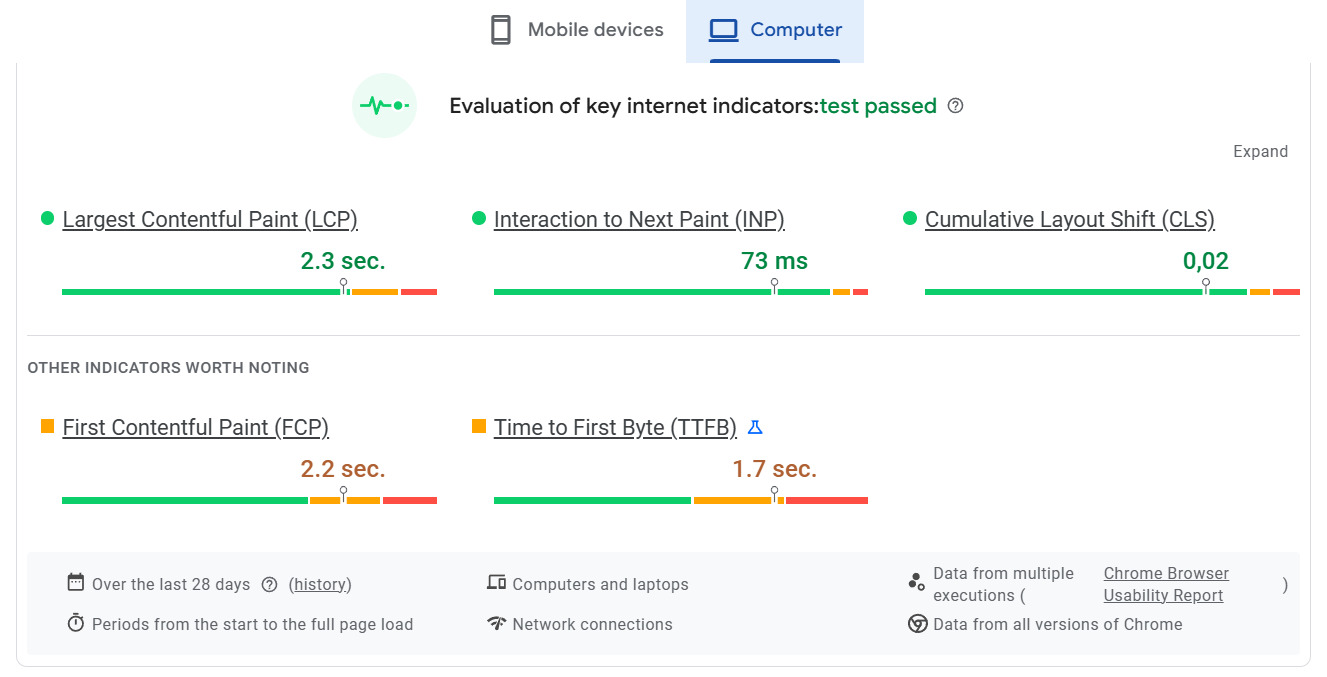
A fast site directly boosts store search visibility and increases organic traffic for ecommerce. Plus, instant-loading pages make customers more likely to complete a purchase.
Mobile Optimization: A Must, Not an Option
Over 70% of users shop via smartphones. Google's mobile-first indexing prioritizes your mobile site's quality over the desktop version.
If your site isn't mobile-friendly – small buttons, misaligned text, or non-responsive images – rankings will suffer.
Test your site with Google's Mobile-Friendly Test. Ensure responsive design adapts seamlessly to various screen sizes.
Additional on-page SEO for ecommerce optimizations:
- Optimize button and input field sizes for easy tapping.
- Reduce heavy image loading for mobile devices.
- Simplify navigation with clear, intuitive menus.
A well-executed mobile version is a cornerstone of ecommerce SEO best practices and a direct path to higher conversions.
Security (HTTPS) and Clean Code: Earning Trust from Google and Users
HTTPS is non-negotiable. It's not just about data protection – it signals trust. Browsers flag non-HTTPS sites as "not secure," scaring off customers.
Google prioritizes secure sites, so switching to HTTPS is a must for any online store.
Clean code is another critical aspect of technical SEO. Eliminate duplicate tags, markup errors, and outdated scripts. Use Google Search Console or the W3C Validator to spot issues.
Regularly checking and fixing code errors improves indexing and strengthens search engine trust.
Clear Paths for Crawlers: Sitemap and Robots.txt
Search engine crawlers need guidance on what to index and what to skip. Two key files make this happen: sitemap.xml and robots.txt.
- Sitemap.xml helps crawlers discover new pages and understand your site's structure.
- Robots.txt controls which pages crawlers can access (e.g., excluding cart or filter pages).
Properly configured files accelerate ecommerce site optimization and make SEO for online stores more manageable.
Generate sitemaps automatically via CMS platforms (e.g., WordPress, OpenCart, Shopify) or tools like XML Sitemaps Generator. Verify robots.txt in Search Console.
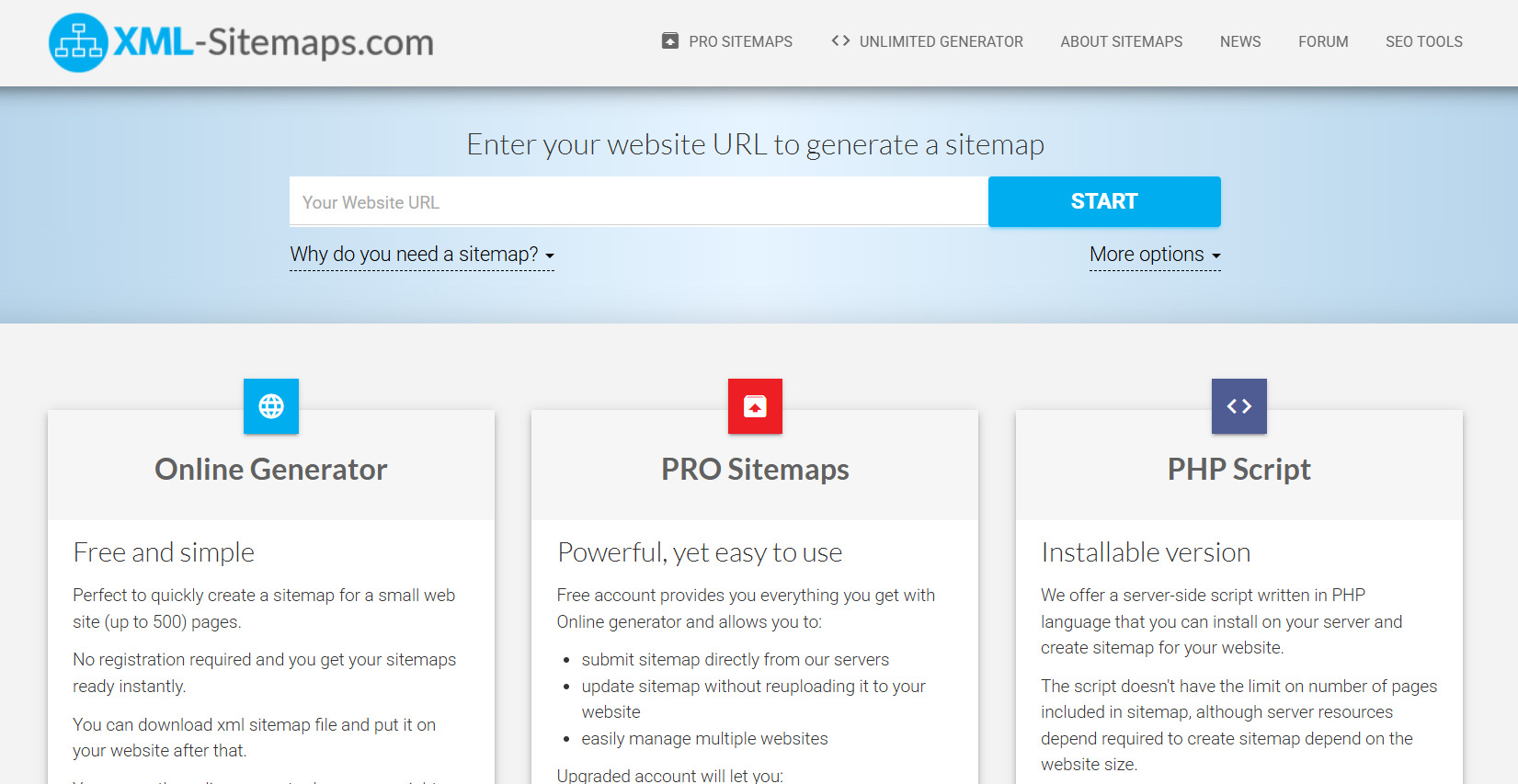
A solid technical foundation – fast, secure, well-structured, and crawler-friendly – sets the stage for successful SEO for online stores.
Ecommerce Keyword Research: Finding Your Customers' Voice
Effective SEO for online stores starts with understanding how customers search. It's not just about collecting keyword data – it's about knowing their intent, pain points, and the words that drive them to buy. The better you align with their language, the higher your chances of outranking competitors.
Types of Queries: From "What to Choose" to "Buy on Sale"
Keywords fall into several categories, and you need to target them all, not just commercial ones.
- Informational Queries – Users aren't ready to buy yet; they're seeking advice or comparisons. Examples:
- "best smartphone for photography"
- "how to choose running shoes"
- Navigational Queries – Users know a brand or category:
- "Nike Air Zoom Pegasus buy"
- "iPhone 15 specs"
- Commercial (Transactional) Queries – Users are ready to act:
- "buy LG refrigerator"
- "laptop on sale with delivery"
Understanding query types lets you craft a strategy that covers the entire customer journey – from research to checkout. This is the foundation of effective SEO strategies for online stores.
Finding Goldmines: Low-Frequency Queries for Quick Wins
For new stores or highly competitive niches, avoid chasing broad, high-volume keywords like "buy iPhone." Big players with massive budgets dominate those. Instead, target low-frequency queries – specific phrases with lower search volume but higher conversion potential.
Examples:
- Instead of "buy dress," target "buy blue linen midi dress."
- Instead of "gym shoes," use "fitness sneakers for wide feet."
Low-frequency queries are easier to rank for, attract targeted customers, and drive ecommerce site optimization with minimal investment.
How to find them:
- Use tools like Ahrefs, Serpstat, or Semrush to analyze frequency, difficulty, and user intent.
- Explore Google's autocomplete and "People Also Ask" sections.
- Study competitors' top-performing keywords.
Structuring a Keyword Map for Complex Site Architecture
Online stores often have hundreds or thousands of pages – categories, subcategories, filters, brands, and product pages. Without a clear keyword map, chaos ensues.
A semantic core is a structured list of keywords grouped by meaning and intent. It ensures each page targets unique queries, avoiding internal competition.
Example keyword grouping:
| Site Section | Goal | Example Keywords |
|---|---|---|
| Category: "Sneakers" | Overview page | "buy sneakers," "men's sneakers price" |
| Subcategory: "Running Sneakers" | Specific focus | "running sneakers on sale," "men's running shoes" |
| Product Page | Specific product | "Nike Pegasus buy" |
Use Excel or tools like Google Keyword Planner to build your core.
A well-organized semantic core acts as a navigation map for on-page SEO for ecommerce, helping search engines understand your site's structure.
Assigning Keywords to Pages
With your semantic core ready, the next step is keyword distribution. A common mistake is using the same keywords across multiple pages, causing Google to struggle with relevance and lowering rankings.
To prevent keyword cannibalization:
- Homepage: Brand and broad terms (e.g., "electronics online store").
- Categories: Choice-driven queries (e.g., "smartphones for photography," "gaming laptops").
- Subcategories: Specific queries (e.g., "Asus gaming laptops," "Samsung smartphones with great cameras").
- Product Pages: Precise queries (e.g., "buy iPhone 15 128GB").
Ensure keywords blend naturally into content without overwhelming readers. This is critical for ecommerce content optimization, where text must sell, not annoy.
Optimizing Commercial Pages: Mastering SEO for Product and Category Pages

Categories and product pages are your store's core. They're where visitors become buyers, making SEO for product pages and SEO for category pages critical to success.
SEO for Category Pages: Turning Categories into Powerful Landing Pages
Categories aren't just product lists – they're robust landing pages that should rank for mid-frequency and commercial queries.
For example, a "Laptops" category could rank for:
- "buy laptop for students"
- "gaming laptops with strong graphics"
- "best laptops 2025"
To make categories attract search traffic:
- Add SEO-Friendly Text: Include valuable content, not fluff. Explain how to choose a product, highlight key features, and differentiate types.
- Use H2/H3 Headings with Keywords: Structure subcategories with keyword-rich headings for better SEO for category pages.
- Optimize Meta Tags: Write clear, keyword-inclusive Title and Description tags that sound natural.
- Incorporate Filters and Sorting: These enhance UX and create additional pages for specific queries, boosting on-page SEO for ecommerce.
- Optimize Images: Use keyword-rich alt tags for banners and thumbnails without overstuffing.
A well-optimized category page drives organic traffic for ecommerce and strengthens store search visibility.
SEO for Product Pages: Standing Out Among Similar Listings
Generic descriptions and dull photos push customers to competitors. To shine, optimize every element.
Key SEO for product pages tactics:
- Title: Include brand, model, and key specs (e.g., "ASUS VivoBook 15 X1504VA, 16GB, 512GB SSD").
- Description: Write engaging, unique copy – not manufacturer text, which Google flags as duplicate. Highlight benefits, use cases, and target audience.
- Specifications: Use structured data (schema.org/Product) for rich snippets showing ratings and prices.
- Reviews: Add authentic customer feedback to boost trust and click-through rates.
- Photos and Videos: High-quality images from multiple angles and short video reviews increase time on page.
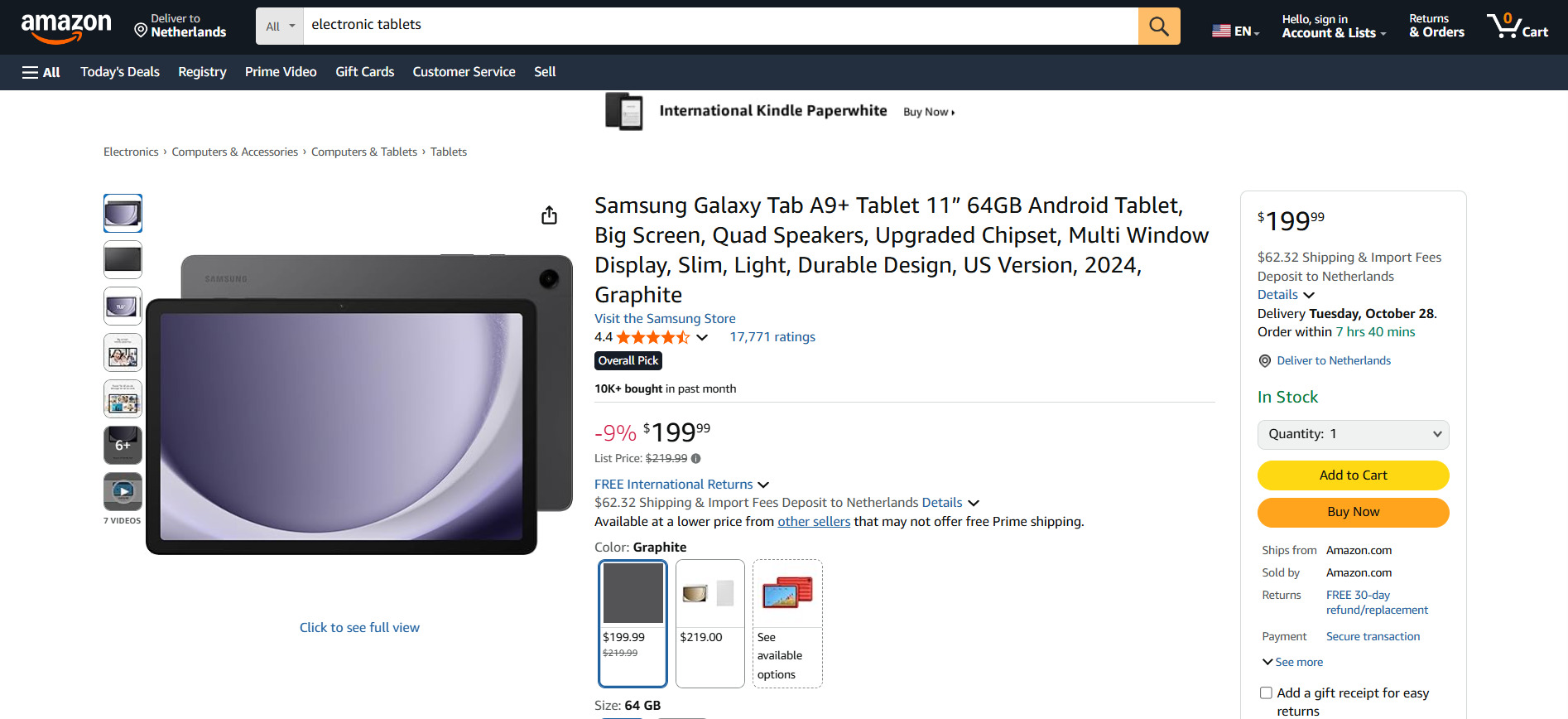
The golden rule: Answer all customer questions on the page. When users don't need to search elsewhere, Google sees your content as high-quality.
Maximizing Ecommerce Content Optimization for Sales
Ecommerce content optimization goes beyond keywords – it's about guiding users to act.
- Start descriptions with benefits: Explain why the product matters and what problem it solves.
- Use short, compelling CTAs near buttons: "Add to Cart Now," "Grab the Deal Today."
- Break up text with lists and tables for easy scanning.
- Add internal links to related products or accessories.
Optimized content increases time on page and purchase likelihood, improving behavioral signals and boosting product page rankings.
Tackling Cannibalization and Duplicates
Cannibalization happens when multiple pages compete for the same keyword, confusing Google and hurting rankings.
To avoid it:
- Audit your semantic core for overlapping keywords.
- Use canonical tags (rel="canonical") for duplicate pages.
- Set up pagination (rel="next", rel="prev") and block filter pages from indexing via robots.txt.
- Merge similar pages (e.g., same product in different colors) into one with variants.
A clean structure prevents internal competition, helping crawlers prioritize the right pages. This is essential for ecommerce SEO best practices and long-term ranking success.
Optimized product and category pages don't just form a catalog – they create a system that attracts, engages, and converts visitors into buyers, the essence of SEO for product pages and categories.
Content Marketing: Driving Traffic Before and After Purchases

SEO for online stores isn't just about product pages. Search engines reward sites that establish authority through valuable content. Content marketing attracts customers early in their journey and retains them post-purchase, making it a long-term investment in improving store search visibility.
Blogs as a Tool to Increase Organic Traffic
A blog is your primary tool for answering customer questions and driving traffic.
It serves two key purposes:
- Attracts Informational Traffic: Users researching purchases search for advice. An article like "How to Choose a Home Treadmill" captures those still exploring, giving you a chance to introduce your brand.
- Builds Trust: Expert articles showcase your knowledge, convincing users your store is reliable.
Write for readers, not search engines. Answer real questions with clear, actionable advice. This approach strengthens your SEO strategies for online stores.
Guides and Reviews: Helping Customers Choose and Buy
Guides and reviews bridge information and commerce, nudging users toward purchases.
- Selection Guides: Create detailed guides like "Top Smartphones Under $500 in 2025." Offer value and link to relevant products.
- Comparative Reviews: Write "Model A vs. Model B" posts, honestly outlining pros and cons. This builds trust and drives decisions.
Such content excels at ecommerce content optimization, shortening the path from question to order.
Viral Content for Natural Off-Page SEO
Shareable content delivers dual benefits:
- Social Media Traffic: Engaging posts reach thousands, driving direct visits.
- Natural Backlinks: Authoritative sites link to your content, signaling trust to search engines. This is a cornerstone of off-page SEO for online stores.
Viral content ideas:
- Infographics with useful stats.
- Original research or surveys.
- Unique product testing videos.
Internal Linking: Keeping Users in the Sales Funnel
Great content needs smart integration. Internal linking keeps users engaged and guides them through your site.
Practical examples:
- Blog-to-Catalog Links: In a "How to Choose a Router" post, link to specific models in your catalog.
- Catalog-to-Blog Links: Add a "Helpful Articles" section in product pages linking to relevant guides.
- Article-to-Article Links: Link a treadmill selection guide to a workout program article to boost session time.
Effective linking distributes page authority, speeds up indexing, and improves behavioral metrics – a key part of on-page SEO for ecommerce that drives ecommerce site optimization.
Don't treat your blog as a side project. It's integral to SEO for online stores, building a steady traffic stream that grows monthly with these ecommerce SEO tips.
Off-Page SEO and Link Building: Why Content Alone Isn't Enough
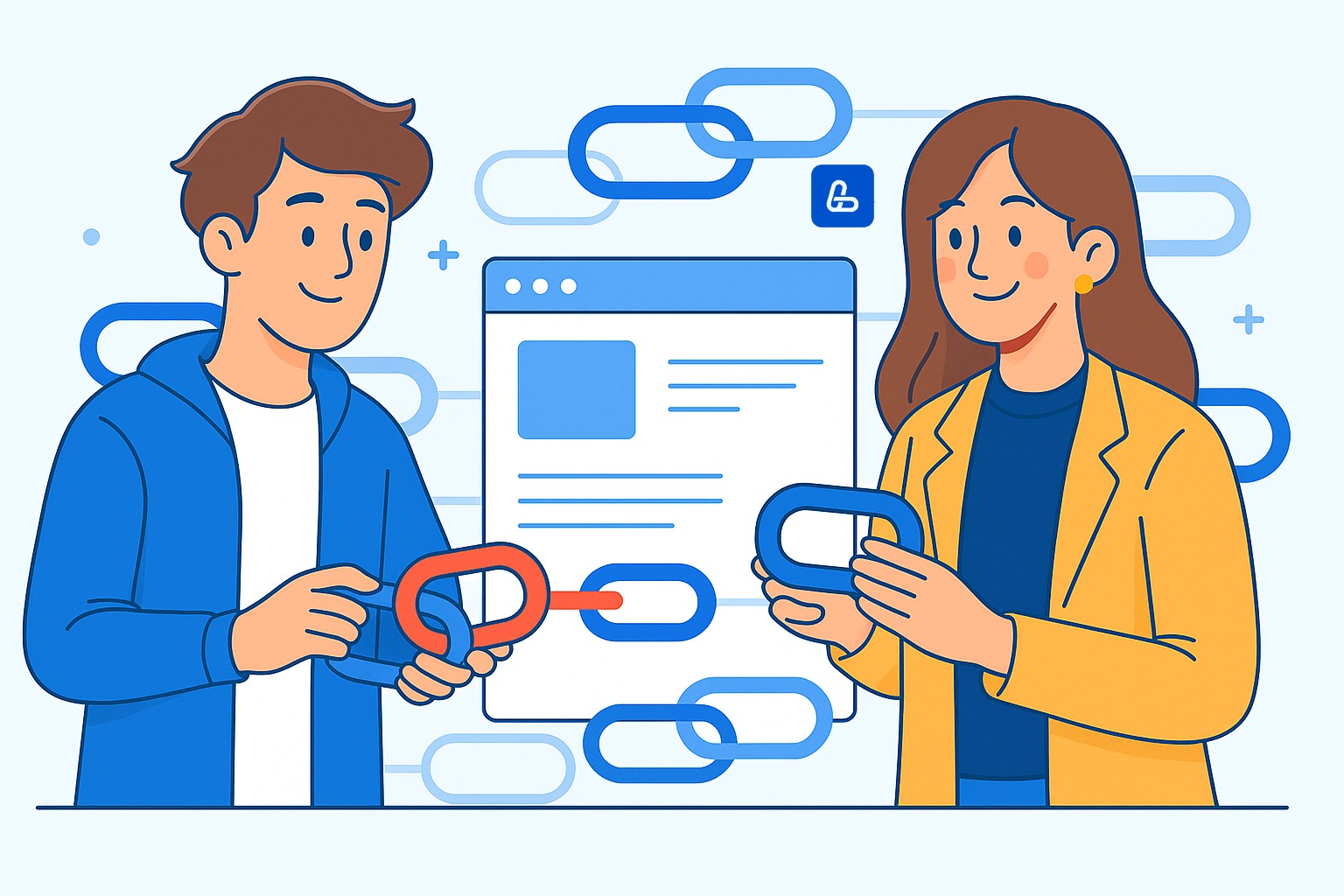
Many store owners think optimized content and technical SEO are enough for rankings. They're wrong. To convince Google your store is trustworthy, you need authority – and in SEO, authority comes from links.
Links are like business referrals. The more high-quality mentions you have, the more search engines trust you. Off-page SEO for online stores is a strategic necessity for any ecommerce project.
Why Links Are the Currency of Trust
When other sites link to yours, Google sees it as a vote of confidence. Links from authoritative industry portals, blogs, or media carry more weight.
For SEO for online stores, prioritize:
- Contextual Links – Embedded in relevant articles, reviews, or comparisons.
- Editorial Mentions – Natural links from news sites mentioning your brand.
- Review Links – From product reviews, blogs, YouTube, or partner pages.
Each link passes authority, boosting store search visibility and rankings for competitive keywords.
Quality always trumps quantity. One link from a reputable site outweighs hundreds from low-value sources.
Risks of Black-Hat Tactics vs. Benefits of White-Hat SEO
Some businesses cut corners with black-hat or gray-hat link-building: mass link purchases, spammy sites, low-quality PBNs, or forum spam. These may yield short-term gains but risk penalties.
Google's Penguin and SpamBrain algorithms scrutinize link quality, context, and anchor text. Too many commercial anchors (e.g., "buy cheap," "shoe store") can tank rankings.
A white-hat SEO strategy for online stores focuses on quality content and long-term partnerships. It's resilient to algorithm changes, ensuring lasting results.
Local Link Building for Ecommerce: Attracting Regional Customers
For stores targeting specific regions, local link building is key. Google values geographically relevant links for commercial queries.
How it works: Links from local media, blogs, or directories signal regional importance, boosting local search visibility.
Ecommerce SEO tips for local link building:
- Publish in local online magazines or community sites.
- List your store in local business directories with active links.
- Partner with local bloggers for Instagram or YouTube reviews with geotags.
- Host regional promotions or charity events to earn media mentions.
- Ask suppliers or partners to link to your site.
Local SEO is especially effective for niches with offline delivery, like electronics, furniture, or cosmetics, driving organic traffic for ecommerce.
International Link Building for Global Stores
For stores expanding globally, link building gets complex. Cultural, linguistic, and technical nuances matter.
Key principles for international link building:
- Multilingual Links: Each language version needs links from relevant regional domains (.de, .fr, .es, etc.).
- Local Media and Platforms: Don't promote a French site with U.S. sources – Google considers domain origin.
- Regional Influencers: Local bloggers and journalists drive higher engagement.
- International Tools: Use Ahrefs, Majestic, or Semrush to analyze competitors' link profiles across languages.
- Anchor Text Control: Create region-specific anchor lists tailored to local semantics.
Balance is critical – overloading links from one region can raise red flags. A balanced profile reflects your brand's global presence, strengthening off-page SEO for online stores.
Why Trust Professionals with Link Building
Link building isn't just about placement – it's about analytics, strategy, and quality control. Mistakes cost dearly: lost rankings, penalties, or traffic drops. Professionals streamline the process.
LinkBuilder.com specializes in link building for ecommerce, offering:
- Link profile audits.
- Toxic link removal.
- High-quality link-building strategies.
- Content placement on trusted platforms.
- Ongoing monitoring and strategy adjustments.
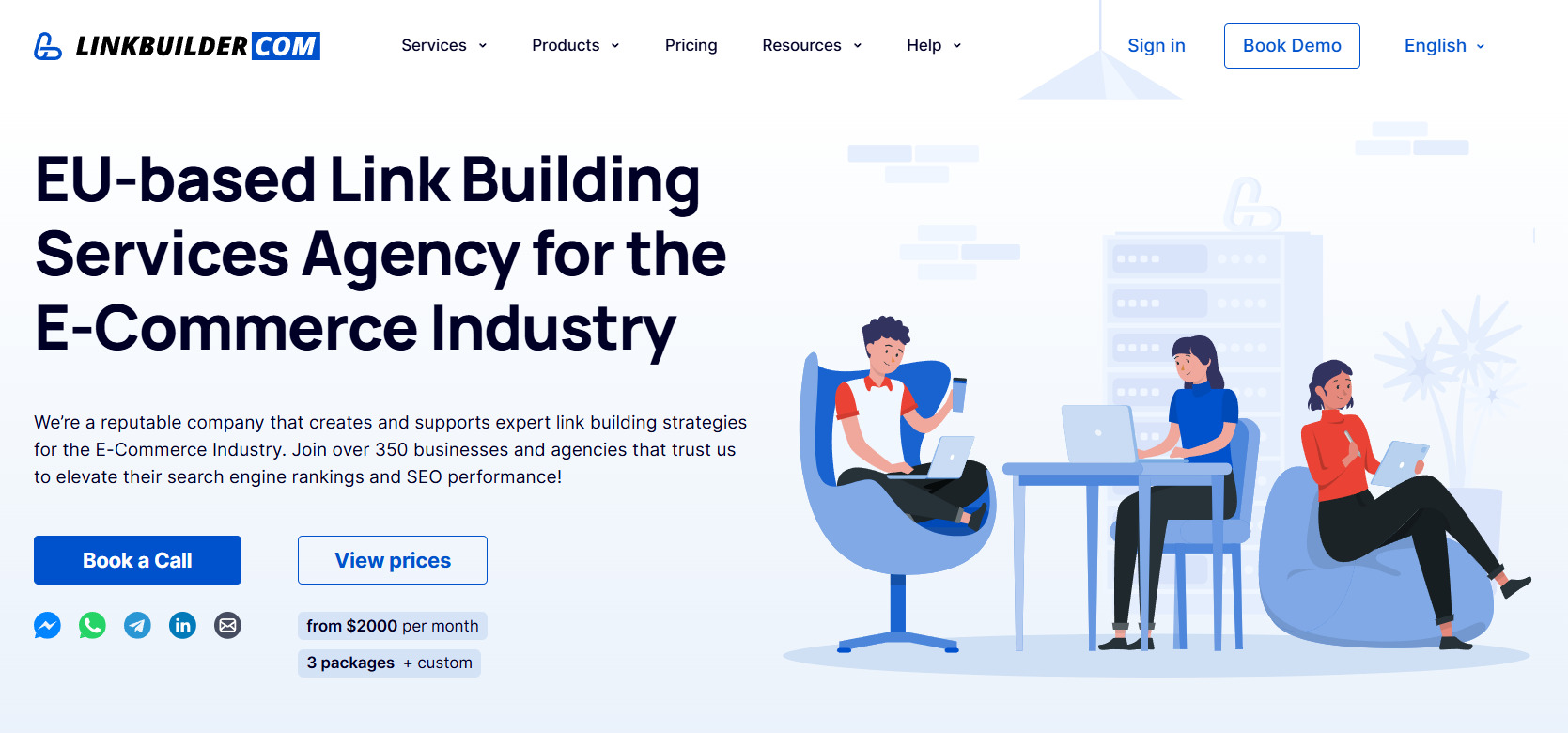
Professional link building is an ongoing process. A strong link profile boosts store search visibility and search engine trust.
Links are a cornerstone of SEO for online stores. Content and technical SEO lay the groundwork, but links drive growth, making your brand visible and competitive.
Partner with LinkBuilder.com for a strategy that delivers lasting results and real profits. Book a consultation to discuss link-building strategies for your store.
Behavioral Factors: How UX Design Impacts Ecommerce SEO
Behavioral factors – how users interact with your site – matter to Google. Metrics like time on site, pages viewed, click-through rates, and bounce rates influence rankings.
Even with perfect technical SEO and optimized content, poor UX can undermine everything. For online stores, where conversions (purchases, sign-ups, or form submissions) are the goal, UX is critical.
Intuitive Navigation: Don't Make Users Think
Customers want to find products fast. Confusing menus or complex navigation drive them away. Navigation must be simple, intuitive, and logical.
Key principles:
- Category Hierarchy: Organize products into clear categories and subcategories (e.g., "Electronics → Smartphones → Samsung").
- Breadcrumbs: Help users navigate and backtrack easily.
- Filters and Sorting: Enable brand, price, or feature-based filtering without slowing pages or causing indexing issues.
- Menu and Search: Ensure menus are clear and search delivers relevant results with keyword-driven autocomplete.
- Related Product Blocks: Suggest "People Also Bought" or "Frequently Purchased Together" items.

Strong navigation lowers bounce rates and increases page views, boosting store search visibility.
One-Click Checkout: Reducing Barriers to Purchase
The more steps a purchase requires, the higher the chance of abandonment. Simplify the process with a fast cart, clear delivery costs, and minimal form fields.
Options to implement:
- One-Click Buy Button: Skip the cart and go straight to checkout for single-item purchases.
- Contact Me Option: Ideal for services – users enter a phone number or email for follow-up.
- Auto-Filled Forms: Leverage browser or CMS autofill for addresses and details.
- Transparent Terms: Display shipping costs, payment options, and delivery times upfront.
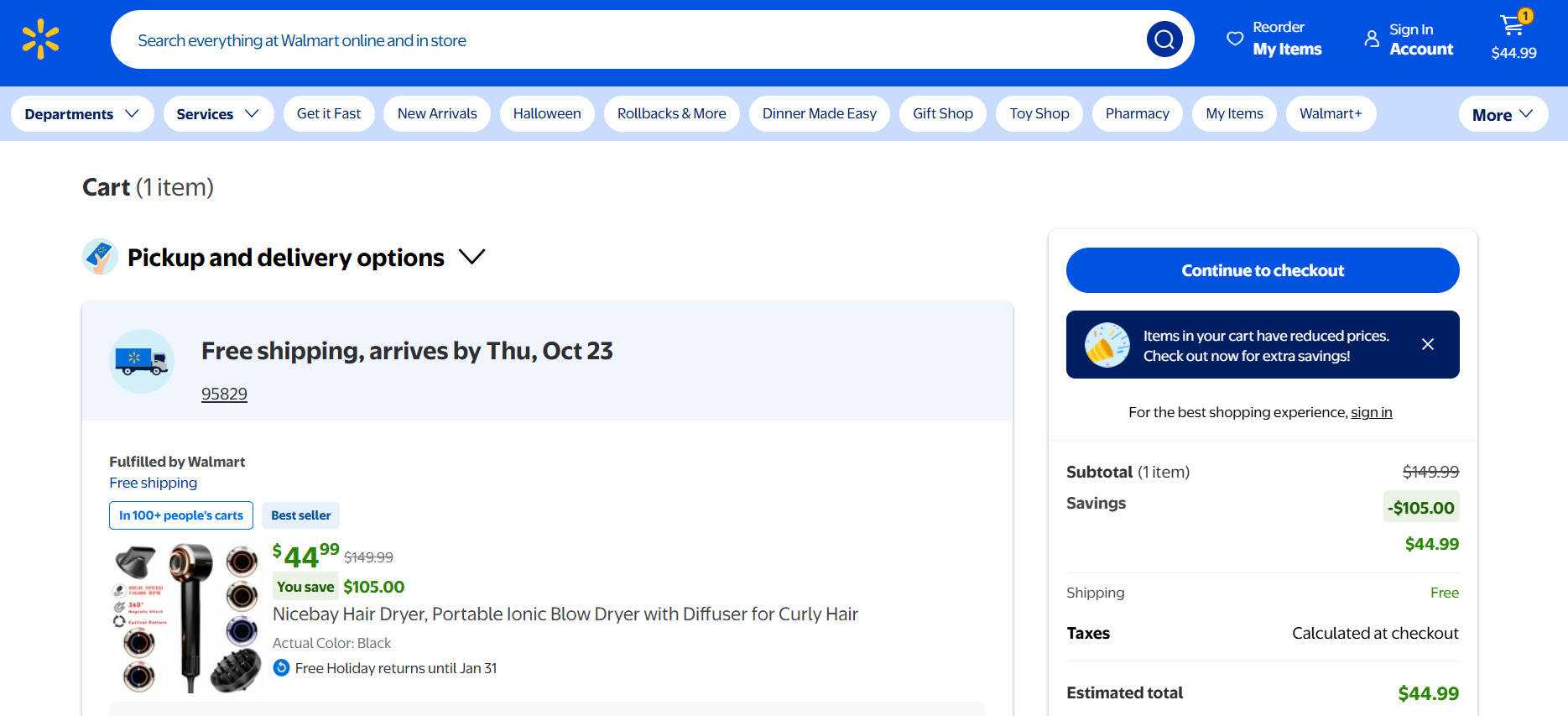
Fewer steps increase conversions, signaling to search engines that your pages are valuable – a key factor in SEO for product pages.
Reviews and Ratings: Social Proof Search Engines Love
Customers trust peer opinions. Reviews and ratings boost conversions and help Google gauge page quality.
Best practices:
- Use Real Reviews: Fake comments risk penalties and erode trust.
- Prompt Feedback: Ask questions like "How's the product quality?" to generate unique content.
- Leverage Structured Data: Use schema.org/Product for rich snippets with ratings and review counts.
- Sort and Filter Reviews: Let users filter by stars, recency, or popularity.
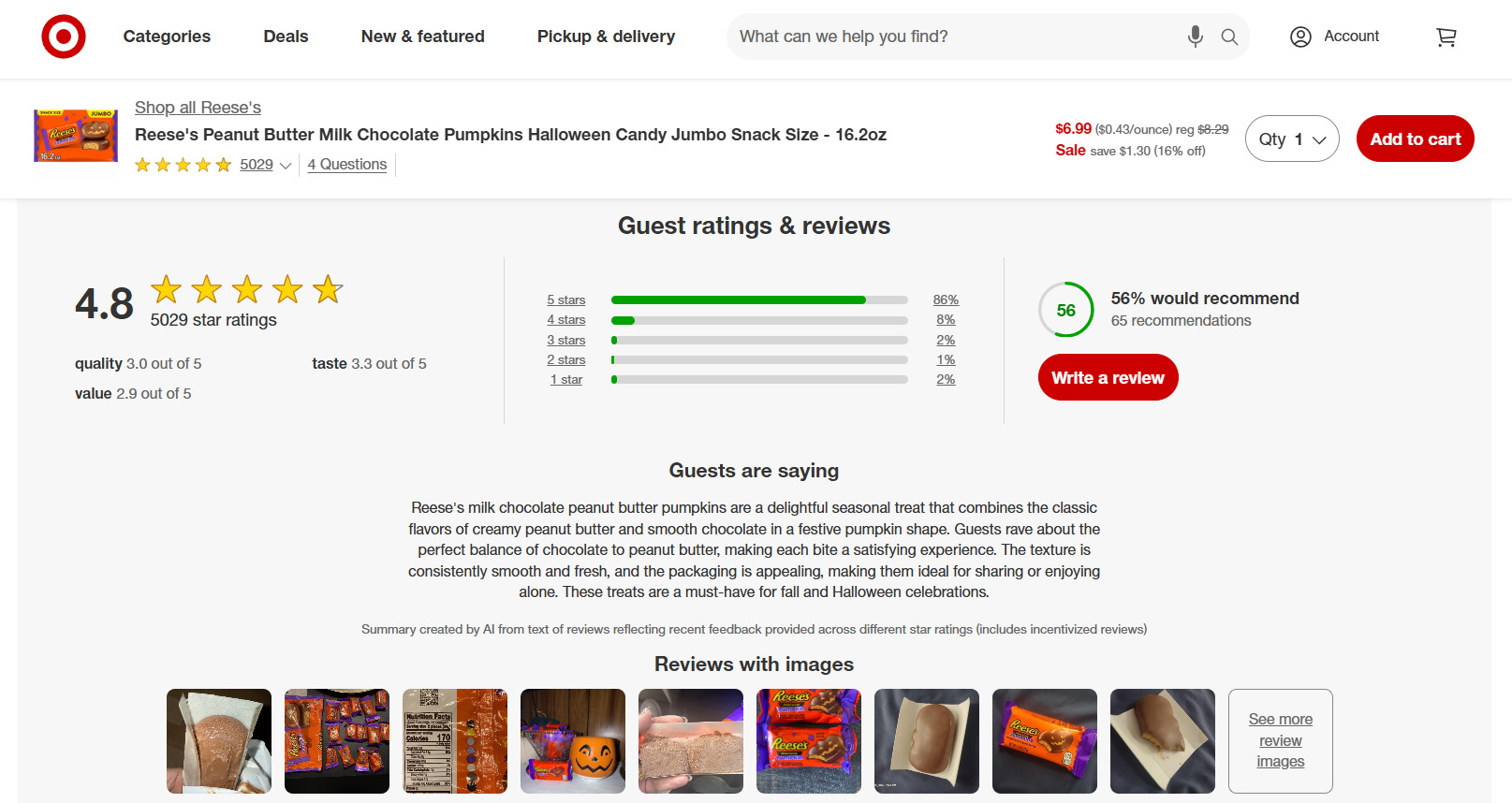
Social proof reduces hesitation, boosts click-through rates, and enhances ecommerce SEO.
Analyzing Behavior: Fixing Pain Points
Behavioral factors require analysis, not assumptions. Tools like Google Analytics, Hotjar, or Clarity reveal where users get stuck, ignore buttons, or abandon pages.
What to check:
- Sales Funnel: Identify drop-off points, like cart abandonment.
- Click and Scroll Maps: See which elements attract attention and which are ignored.
- Time on Page and Depth: Short sessions signal unengaging content or slow loading.
- Mobile UX: Address mobile-specific issues blocking conversions.
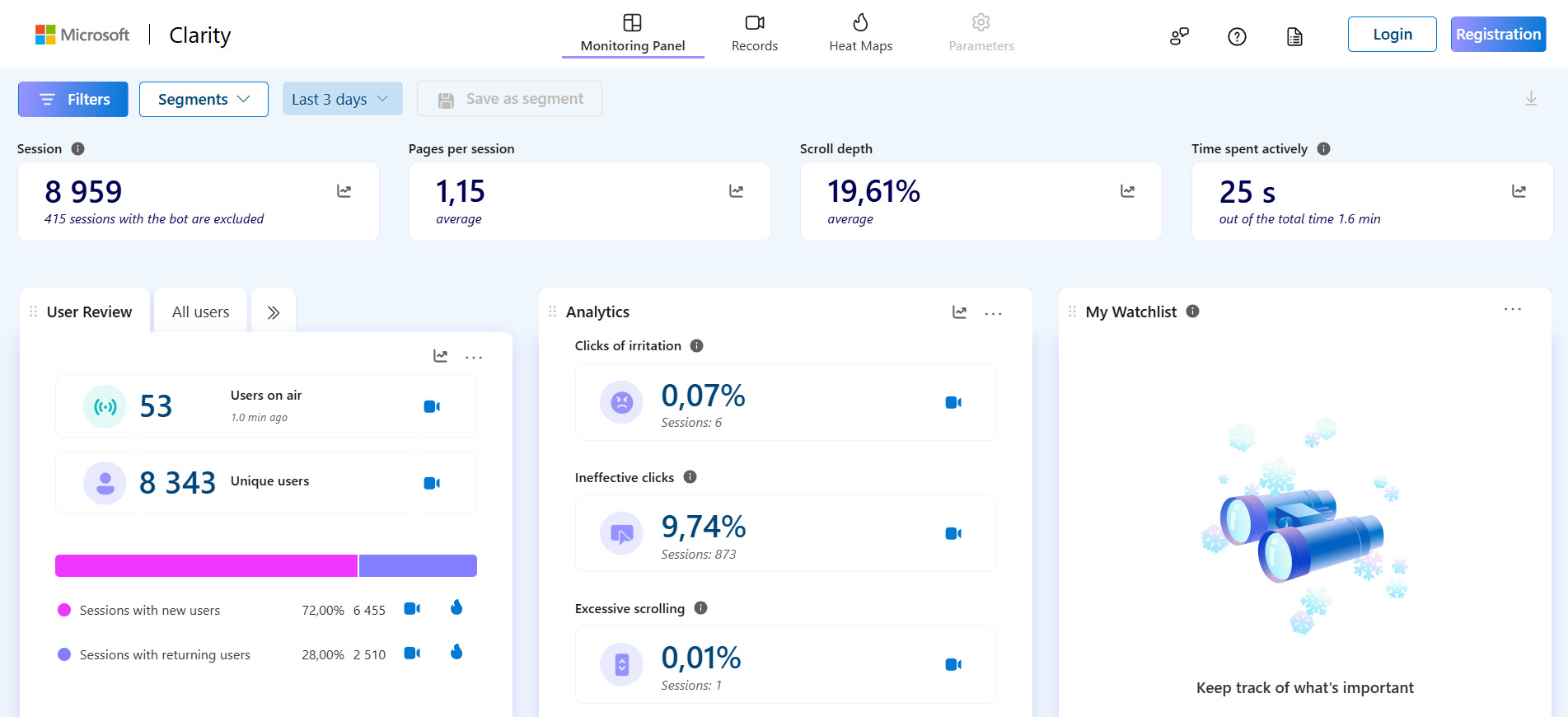
Use insights to:
- Refine text and images.
- Optimize CTA button placement.
- Streamline filters and menus.
- Speed up problematic pages.
Regular UX analysis boosts conversions and increases organic traffic for ecommerce by aligning pages with user behavior, reinforcing your SEO strategy for online stores.
Analytics and Adaptation: Measuring Your SEO Success
SEO for online stores is an ongoing process, not a one-time task. Analytics help you measure what works, identify weaknesses, and make data-driven decisions.
Key Google Analytics Metrics for Ecommerce
Google Analytics is your go-to for evaluating store performance, user behavior, and page effectiveness.
Key metrics:
- Traffic Sources: See how many visitors come from search, ads, social, or direct visits.
- Conversions: Track the percentage of visitors completing purchases or other goals.
- Average Order Value: Measure how much customers spend on average.
- Bounce Rate: High rates indicate UX issues or irrelevant traffic.
- Time on Site and Page Depth: Longer, deeper sessions signal strong engagement.
- Enhanced Ecommerce: Analyze product views, cart additions, and checkouts.
These metrics show how ecommerce SEO impacts sales and highlight pages needing optimization.
Monitoring Ranking Growth for Product Queries
Tracking rankings is essential. Algorithms shift, competitors optimize, and demand fluctuates.
Monitoring methods:
- Rank Tracking Tools: Use Ahrefs, Semrush, or Serpstat to monitor your site's positions.
- Segment by Page and Query Type: Separate product, category, and brand queries for clearer insights.
- Track Trends: Monitor position changes over time to spot seasonality or competitor moves.
- Watch SERP Features: Check if your pages appear in rich snippets, carousels, or "People Also Ask" boxes.
Consistent monitoring ensures your SEO strategy for online stores stays on track, preserving organic traffic for ecommerce.
Regular Audits and Continuous Improvement
Analytics without action is pointless. Implement a cycle of analysis, adjustment, and improvement.
Steps:
- Monthly Content Audit: Check product pages, categories, and blogs for keyword relevance and uniqueness.
- Technical SEO Audit: Verify speed, mobile-friendliness, code cleanliness, sitemap, and robots.txt.
- Link Profile Audit: Monitor new links, remove toxic ones, and refine link-building strategies.
- UX Audit: Analyze user behavior and test page elements like carts or product pages.
- KPI Reporting: Track traffic, conversions, order value, and keyword rankings to guide budgeting.
Regular audits:
- Catch issues early.
- Refine your SEO strategy for online stores.
- Maintain competitive rankings.
- Enhance content and link-building efficiency.
A comprehensive approach with ongoing monitoring turns traffic into sales, driving ecommerce site optimization and sustained ranking growth.
Your Roadmap to the Top: Tying It All Together
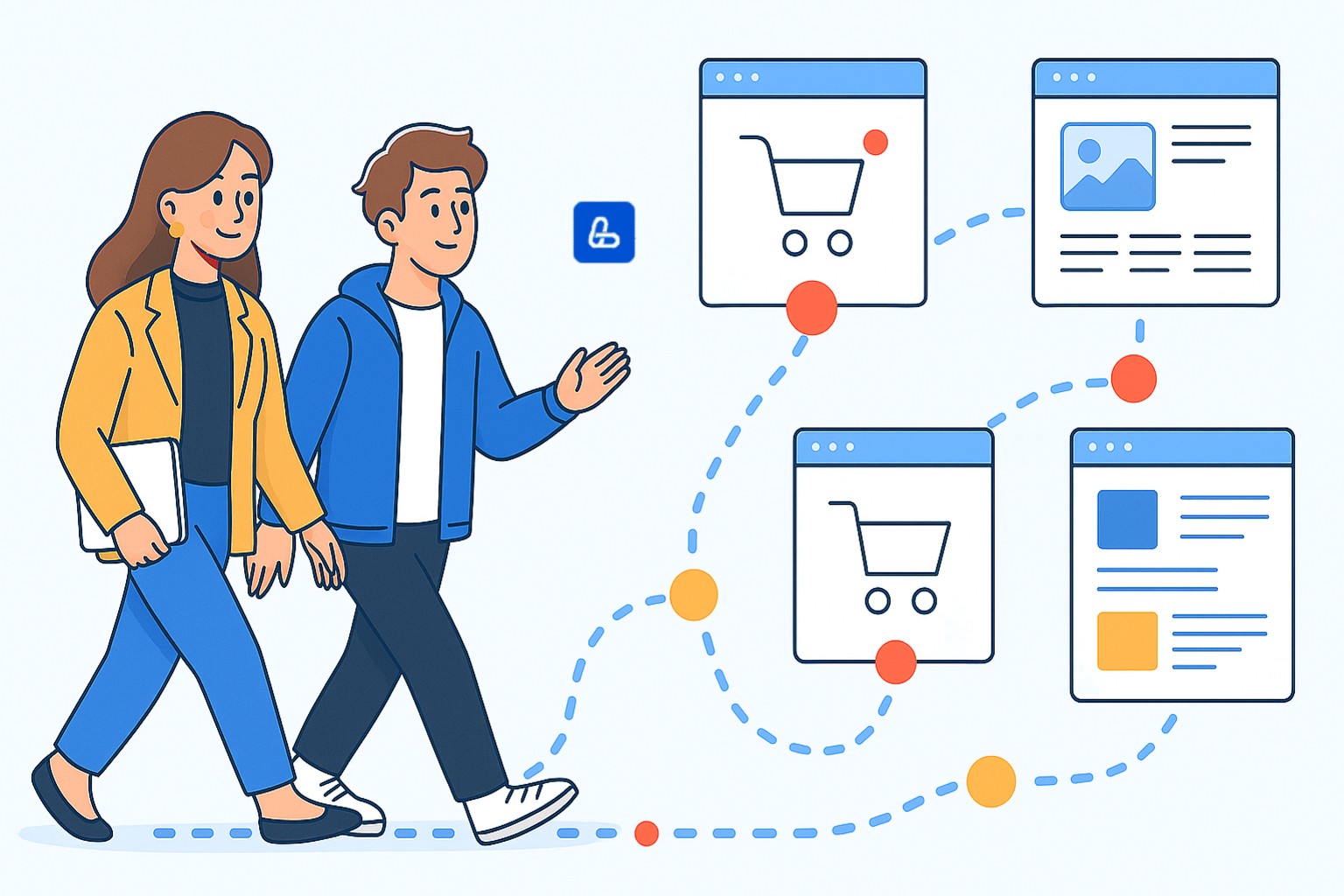
SEO for online stores is a holistic effort where each element supports the others. To reach the top, follow this cohesive checklist to ensure no step is missed.
7 Steps to Sustained Growth and Improved Store Search Visibility:
- Flawless Technical Foundation: Verify page speed, sitemap, robots.txt, HTTPS, and mobile optimization for crawler and user accessibility.
- Thorough Keyword Research: Target customer intent with queries from "what to choose" to "buy on sale," leveraging low-frequency keywords for quick wins.
- Optimized Commercial Core: Enhance SEO for category and product pages to make categories robust landing pages and product pages conversion-driven.
- Engaging Content: Publish articles, guides, and FAQs, refreshing content with new keywords via SEO copywriting.
- Strong Link Profile: Build off-page SEO for online stores with links from blogs, directories, and media, avoiding spammy sources.
- Seamless UX: Simplify navigation, streamline checkout, and add reviews for better engagement.
- Ongoing Analysis and Adaptation: Track conversions, rankings, and engagement to refine content, keywords, and links.
These steps create a robust system for increasing organic traffic for ecommerce and driving sales.
For faster results, trust professionals. LinkBuilder.com offers comprehensive ecommerce site optimization, from link building to full SEO strategies.
Working with experts saves time and ensures steady growth in rankings, visibility, and profits.








